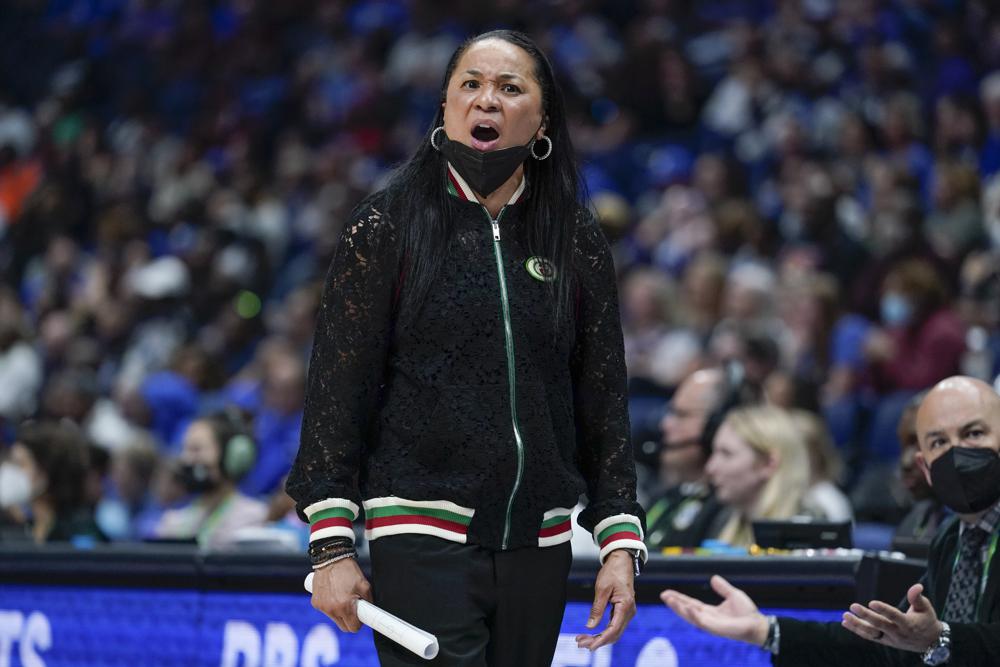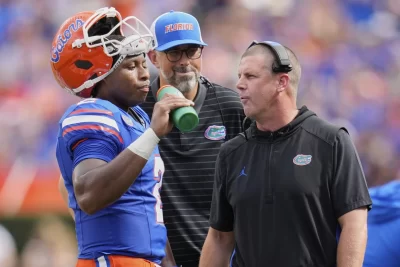
Dawn Staley and South Carolina are once again a No. 1 seed in the women’s basketball NCAA Tournament — a familiar role for the Gamecocks.
South Carolina earned the the top overall seed in this year’s tournament field, which was announced Sunday night. The Gamecocks have been No. 1 in a region six times since 2014.
The women’s tournament itself also is getting back to a familiar setting.
For the first time since 2019, the tournament will feature games on campus sites with fans in the stands.
“I just think the semblance of normalcy, I hope brings back some good feelings and the excitement and the hoopla that is part of this event, which is what makes it so great, is the fans,” UConn coach Geno Auriemma said. “I think having them back is going to make all the difference in the world.”
Auriemma’s Huskies are a No. 2 seed in this year’s competitive field.
Staley isn’t buying the argument that as the top seed her Gamecocks will have an easy road to winning their second national championship.
“They said that the No. 1 overall seed has an easier path to the Final Four. I don’t see that,” Staley said. “But I do believe we’re going to play our best basketball from here on out.”
Potentially awaiting Aliyah Boston and the Gamecocks in the regional final could be Caitlin Clark and No. 2 Iowa in a matchup of two top players in the sport.
While there will be much familiarity to the tournament, there also are some major changes — including expanding the field to 68 teams.
This year’s bracket grew to match the men’s field with the play-in games on Wednesday and Thursday. The Gamecocks, who top the Greensboro Region, will face the winner of Howard and Incarnate Word — one of the First Four games.
Expanding the field was one of the many changes to the women’s basketball tournament in the wake of inequities revealed at last season’s NCAAs.
North Carolina State is the top seed in the Bridgeport Region and could face UConn in the regional final. The Huskies finally are getting healthy with reigning Associated Press player of the year Paige Bueckers working her way back from a knee injury that sidelined her for two months.
“They have all the pieces, all of their players playing,′ said women’s basketball selection committee chair Nina King. ”Relative to Bridgeport, we place the teams on the seed lines on an S-curve. When we place them in the regionals we try and stay true to the S-curve. … It’s how it fell this year and that’s why Connecticut is in Bridgeport.”
Louisville is the top seed in the Wichita Region. The Cardinals were the most surprising of the top seeds, edging No. 2 seed Baylor after the Bears lost in the Big 12 title game.
The NCAA announced the selections on Sunday for the first time since 2006 this year. Officials hope to move the announcement back to its normal Monday night slot next year. NCAA officials also would like to play next year’s opening round play-in games at a neutral site, similar to the men’s event in Dayton, Ohio.
As part of a return to normalcy, the top 16 seeds will host the first- and second-round games. Last year the entire tournament was played in a makeshift bubble in San Antonio because of COVID-19 concerns. However, because the coronavirus continues to take a toll on the country, the women’s bracket — just like the men’s tournament — has teams in waiting in case a school can’t play because of COVID-19.
King said that the first four teams in waiting are Boston College, Missouri, South Dakota State and UCLA. But the NCAA expects to be able to play the tournament in all its normal locations, including at campus sites for the first weekend.
Bridgeport, Connecticut; Greensboro, North Carolina; Spokane, Washington; and Wichita, Kansas, will host the regionals and Minneapolis is the site of the Final Four on April 1 and 3.
Longwood, IUPUI and Incarnate Word will all be making their first appearance in March Madness — a phrase the women are allowed to use for the first time. Incarnate Word became the first sub-.500 team to play in the tournament since 2015.
The Southeastern Conference and Atlantic Coast Conference led the way with eight teams each in the field.






